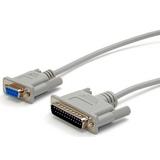Do not buy a machine below serial # 100! Or the first ones off the line. Why?? There are many design changes, most of which usually have to do with coolant leakage or chips getting into places causing problems. Software and Ladder will have some quirky bugs and may not be updated unless you ask or have problems. Updates are not always available and can easily take 3-4 weeks or more to solve your problems. Replacement parts are also not readily available. Manufacturers say they heavily test them in their own market, but remember they do not abuse them as much as most people do. Remember some manufacturers start their serial numbers higher, so you may have to ask questions to try to figure out if the machine is a relatively new model. So, if you do not mind being a beta test site go for it and expect some problems.
Do not buy a full forth axis rotary table unless you really need it! Why?? Clamping is done on a smooth surface. There is not any tooth engagement for extra strength like a toothed coupling. The tolerance is extremely tight to get the unlimited indexing angle capability. This is why full forth axis are more prone to damage or in need of an alignment after a crash. Usually, the worm gear becomes oval shaped or the threads that is engaged gets damaged. Both of which will cause excessive load and servo alarms. Having a service tech come to repair or adjust the alignment will not be cheap or a quick fix. No, this is not covered ever under warranty. The other draw back is that if the programmer forgets to clamp it in the program, the only holding power is the engagement between the worm and worm wheel. It seems most machine tool builders have this weakness, which makes sense mechanically.
Do not buy a machine with an HSK spindle and tooling without some research! Many manufacturers have had problems with HSK type tooling design. They do have more rigidity and therefore hold tighter tolerances because of the greater surface area contact on the face and taper. Some of the problems that seem to be relevant are: contamination inside the clamping area of the tooling. Chips get between the face of the spindle and tool causing occasional run out in tools and problems with clamping. Spindles also lock up more easily because the drawbar clamping mechanism is on the inside of the tool. Often, the balls that drop in and out of the pockets can get wedged with any contamination. Then, when a tool change happens you break a cam follower or servo out because the tool is jammed. Good luck getting it unclamped. Alignment for tool changer is also more critical compared with BT or CAT tool holders. This is because there is not much of a taper for the tool to center itself as it goes in therefore requiring a lot more tool changer alignments after small crashes. Which is the right thing to do anyway, but most companies just change offsets and go. Also, the groove in the tool is sometimes smaller (HSK30 taper) and therefore chips get wedged causing the tool to be thrown during tool change because the alignment will be off or not seated in the arm. Aluminum chips from large face mills cause the most problems. Mainly because aluminum is very light and sticks to everything.
Before you buy, ask to go to customers to look at their process. Observe the nooks and crannies where chips are thrown and build up. Also ask to see their service report file folder on that machine if they have one.
Avoid Machines that are special order Self explanatory! Hard to get everything, parts, service man with experience on machine, software bugs and unproven design. Ask to see the machine at another customer at a minimum.
|




